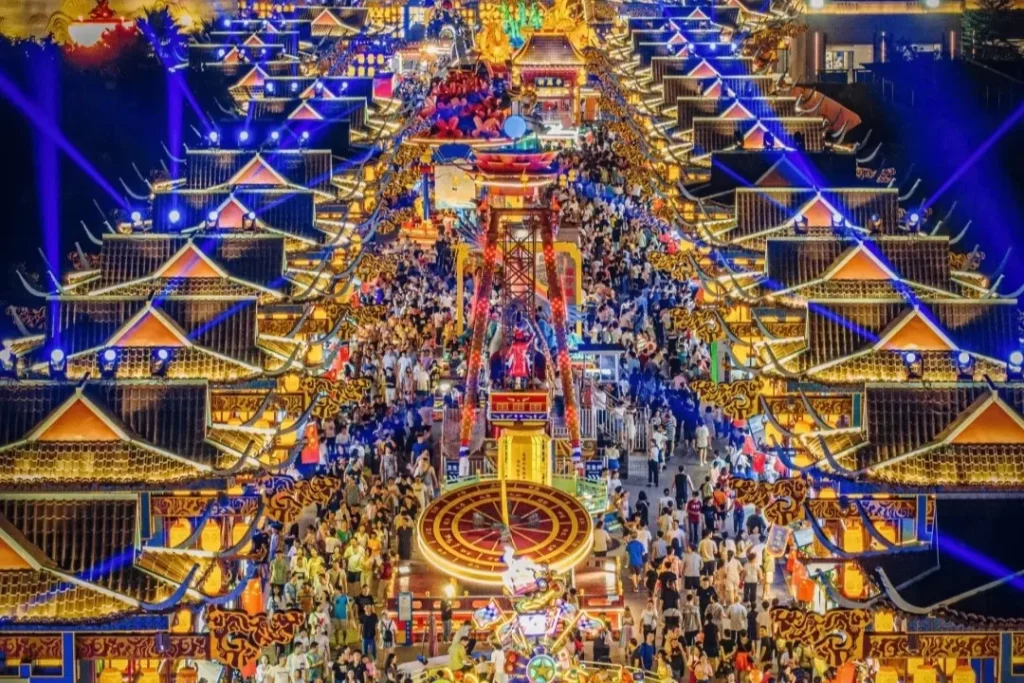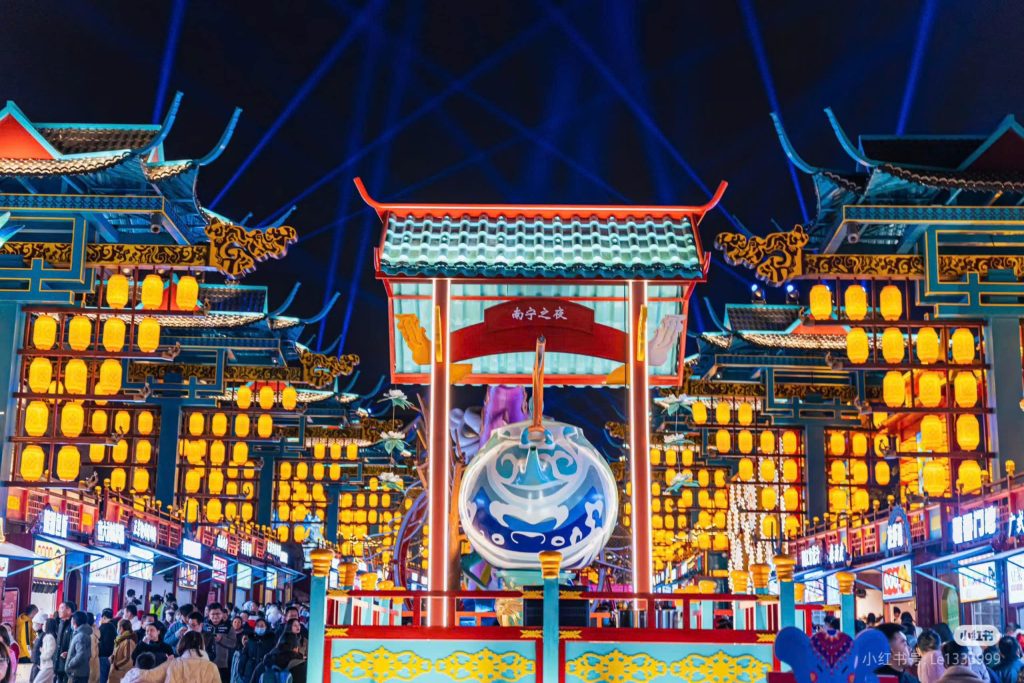This post is also available in:
Tiếng Việt (Vietnamese)
This article explores the strategic transformation of Nanning, China, into a model of experience-driven night-time economy (NTE), emphasizing the role of digital sharing culture, sensory design, and immersive urban scenography. Through the example of Huni Night Market, it highlights the shift from food-led consumption to visual entertainment and social media-oriented experiences, positioning Nanning as a pioneering night-time destination in the age of experiential consumption.
Nanning: The City That Never Sleeps
Located in southern China, Nanning has long been known as a “late-night city” where life continues well beyond midnight. With locals often active until 2–3 a.m., the city has earned the informal title of “Sleepless City of South China.”
More than a lifestyle habit, local authorities and businesses have begun to leverage this nocturnal energy as a competitive advantage—not only for consumption but as a catalyst to redesign economic growth models under the banner of the designed night-time economy.
A New-Gen Night Market: From Tasty Bites to Shareable Scenes
Launched in 2023, Huni Night Market exemplifies this new way of thinking.
Stretching over 666 meters, with 16 performance stages and over 180 vendor stalls, Huni is not a spontaneous street market—it is a curated consumption stage, a “mobile canvas” where visitors eat, watch, listen, photograph, and most importantly—share.
Where traditional night markets appeal to the nose and palate, Huni is designed for the eye, ear, and algorithm—a multi-sensory venue engineered for social virality.
Sharability: The New Currency of the Digital Night
In the age of Gen Z and Gen Alpha—now core segments of domestic and international tourism—“sharability” has become a new benchmark:
-
Spaces must be well-lit and visually inspiring.
-
Experiences should be short, dramatic, and easily captured.
-
Events must have rhythm, focal points, and emotional resonance.
At Huni, everything—from LED dance performances and cosplay to live street music and programmed stage effects—is designed to generate “shareable moments”, ready for TikTok, Xiaohongshu, and WeChat Moments.
From Food Consumption to Experiential Immersion
Where night markets were once known for affordable food, today:
-
Food is the excuse, while entertainment is the main course.
-
Visitors come for a feast of the senses, not just for the stomach.
-
Stalls sell not only snacks—but scenes for check-in rituals.
This reflects a new behavioral model: Food → Entertainment → Sharing → Virality → Return Visit
Urban Night Design: Lighting, Staging, and Visual Flow
Nanning has gone beyond merely building a night market; it has scripted an intentional nocturnal urban experience:
-
Lighting: Smart lighting programs evolve by the hour, creating dynamic flows of brightness and ambiance.
-
Open stages: Clusters of mini-performances—hip-hop, street art, cosplay—activate the entire space.
-
Circulation design: Pedestrian pathways, resting areas, photo ops, and dining spots are organized to slow down movement and extend visitor stay, maximizing engagement and expenditure.
Data as Infrastructure: Tech-Enhanced Night Economy Management
Nanning has integrated Big Data and AI to optimize its night-time ecosystem:
-
AI-enabled heat maps and CCTV analyze crowd movement.
-
Performance schedules adapt in real time based on foot traffic.
-
Stall layout, support services, and public safety are data-informed.
In this system, data becomes the operational heartbeat, ensuring scalability without chaos.
Policy as Catalyst: Night Economy as Urban Reconfiguration
In February 2023, Guangxi Zhuang Autonomous Region (which includes Nanning) introduced a comprehensive night economy policy package, featuring:
-
Encouragement of regulated informal markets and open-air performances
-
Financial support for night-time economy startups
-
Extension of public transit hours
These policies aim not just to boost consumption, but to stimulate job creation, entrepreneurship, and public space revitalization.
Economic and Social Impact: The Night as a Shared Economy
Since its opening, Huni Night Market has: Welcomed over 13 million visitors ,Created thousands of part-time jobs for youth, freelancers, and informal workers, Generated new revenue streams in hospitality and culture
More importantly, it has fostered:
-
A cultural expression space for contemporary and traditional arts
-
A new identity for Nanning in the domestic and international travel ecosystem
-
A “must-visit” landmark for modern urban explorers
Nanning’s Emerging Destination Strategy
Nanning is no longer merely a border city in southern China—it is now constructing a curated night-time identity, competing with major destinations like Guangzhou, Shanghai, and Chengdu.
This new model of NTE is:
-
A gateway for post-pandemic tourism repositioning
-
A productivity tool that unlocks the city 24/7 (instead of the 8-hour day)
-
A cultural strategy that transforms local identity into consumer experience
Lessons for Global Cities
Cities like Da Nang, Hue, Hanoi, or Ho Chi Minh City could adopt similar principles:
-
Shift from street food vending to night-time performance markets
-
Reimagine public space as intentional visual narratives, not static zones
-
Transition from physical consumption to content consumption (photos, reels, clips)
The key isn’t budget—but design thinking in treating urban space as a canvas for sensory and shareable experiences.
When Nightfall Becomes an Economic Dawn
Nanning is redefining “night” in urban development—not as a period of rest, but as a golden window for experiential commerce. The city demonstrates that with design, policy, data, and creativity, night-time can become a new source of economic vitality, artistic expression, and emotional resonance.
In the digital era—where every moment can become content—night-time economy is no longer just about light, but about touching the collective memory through sight, sound, and story. And Nanning is doing it exceptionally well.











